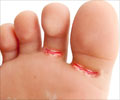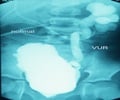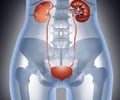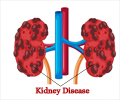According to a new study, use of antibiotic clarithromycin in older individuals along with the use of calcium channel blockers, may increase the risk of acute kidney injury

Sonja Gandhi, B.Sc., of Western University, London, Canada, and colleagues conducted a study to investigate the interaction between calcium-channel blockers (amlodipine, felodipine, nifedipine, diltiazem, or verapamil) and the antibiotic clarithromycin (n = 96,226), compared with azithromycin (n = 94,083), with a focus on acute kidney injury, among older adults (average age, 76 years).
Amlodipine was the most commonly prescribed calcium-channel blocker (more than 50 percent of patients).
The researchers found that coprescribing clarithromycin with a calcium-channel blocker was associated with a higher risk of hospitalization with acute kidney injury compared with coprescribing azithromycin (0.44 percent vs. 0.22 percent); in absolute terms, coprescription with clarithromycin resulted in a 0.22 percent higher incidence of hospitalization with acute kidney injury.
When examined by type of calcium-channel blocker, the risk of hospitalization with acute kidney injury was highest among patients coprescribed clarithromycin with nifedipine (absolute risk increase, 0.63 percent). Coprescription of a calcium-channel blocker with clarithromycin was also associated with a higher risk of hospitalization with hypotension (0.12 percent vs. 0.07 percent patients taking azithromycin; absolute risk increase, 0.04 percent) and all-cause mortality (1.02 percent vs. 0.59 percent patients taking azithromycin; absolute risk increase, 0.43 percent).
"Although the absolute increases in the risks were small, these outcomes have important clinical implications. Our results suggest that potentially hundreds of hospitalizations and deaths in our region may have been associated with this largely preventable drug-drug interaction. This burden on the health care system, given the high costs of managing acute kidney injury, might have been avoided," the authors write.
Source-Eurekalert
 MEDINDIA
MEDINDIA



 Email
Email










